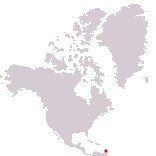Home > North America > Grenada

Grenada
Government type Parliamentary constitutional monarchy
Area 344 kmē (133 sq mi)
Population 106,700 inh. (2011 census)
Population 126,900 inh. (2024 est.)
Population density 369 inh/kmē (954 inh/miē)
Area 344 kmē (133 sq mi)
Population 106,700 inh. (2011 census)
Population 126,900 inh. (2024 est.)
Population density 369 inh/kmē (954 inh/miē)
Capital St. George's (38,300 pop.)
Currency Eastern Caribbean dollar
Human development index 0.795 (68th place)
Languages English (official), Creole-English, Patois (Creole-French dialect)
Life expectancy M 73 years, F 79 years
Currency Eastern Caribbean dollar
Human development index 0.795 (68th place)
Languages English (official), Creole-English, Patois (Creole-French dialect)
Life expectancy M 73 years, F 79 years

Boundaries:
Surrounded by the Atlantic Ocean
GEOGRAPHY DATA OF GRENADA
Largest cities
St. George's 38,300 pop.
Highest mountains
Mount Saint Catherine 840 m (2,756 ft)
Largest lakes
Grand Etang 0.04 kmē (0.015 sq mi)
Largest islands
Grenada 306 kmē (118 sq mi)
Carriacou 34 kmē (13.1 sq mi)
Ronde Island 2.7 kmē (1 sq mi)
Petit Martinique 2.4 kmē (0.9 sq mi)
